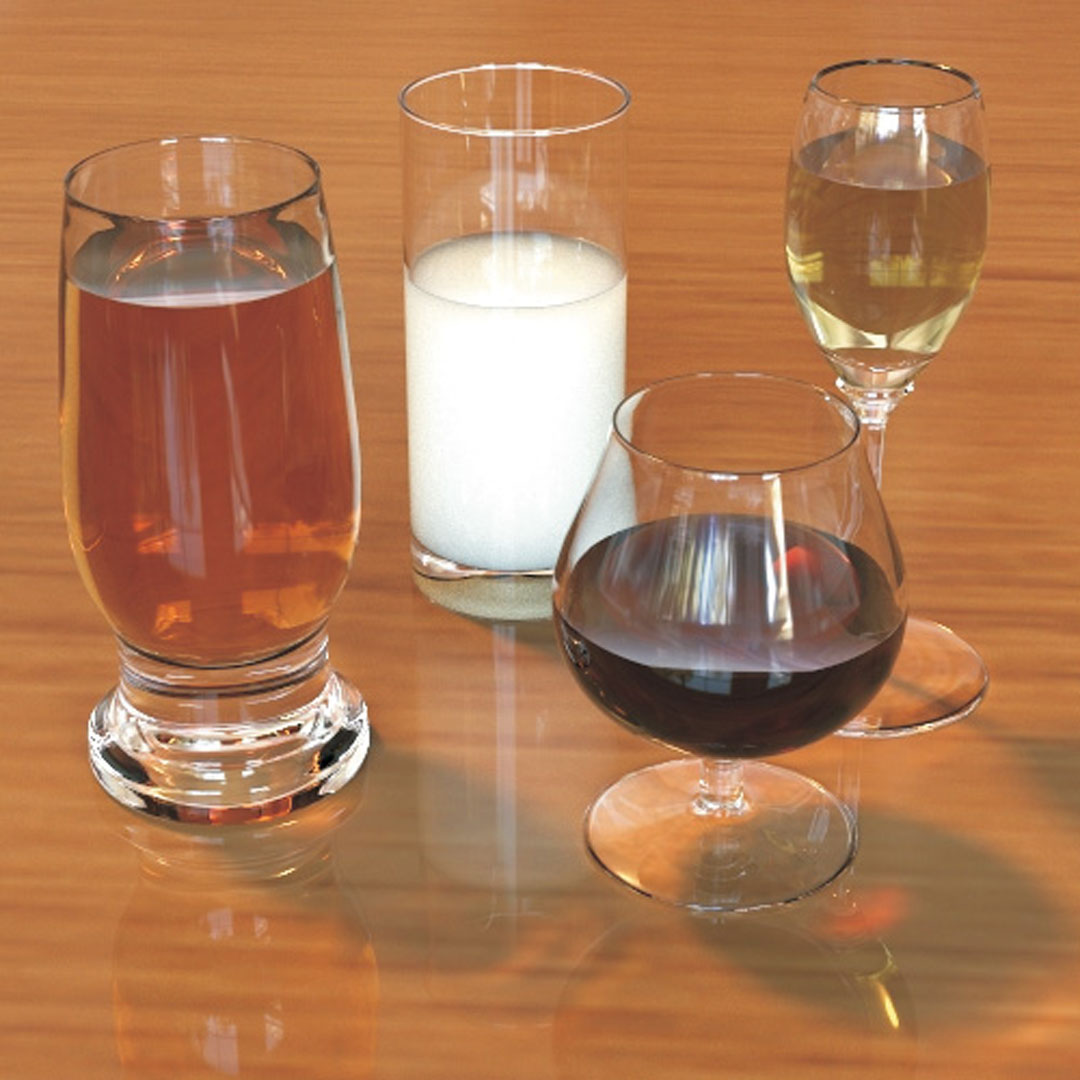“Acquiring scattering properties of participating media by dilution” by Narasimhan, Gupta, Donner, Ramamoorthi, Nayar, et al. …
Conference:
Type(s):
Title:
- Acquiring scattering properties of participating media by dilution
Presenter(s)/Author(s):
Abstract:
The visual world around us displays a rich set of volumetric effects due to participating media. The appearance of these media is governed by several physical properties such as particle densities, shapes and sizes, which must be input (directly or indirectly) to a rendering algorithm to generate realistic images. While there has been significant progress in developing rendering techniques (for instance, volumetric Monte Carlo methods and analytic approximations), there are very few methods that measure or estimate these properties for media that are of relevance to computer graphics. In this paper, we present a simple device and technique for robustly estimating the properties of a broad class of participating media that can be either (a) diluted in water such as juices, beverages, paints and cleaning supplies, or (b) dissolved in water such as powders and sugar/salt crystals, or (c) suspended in water such as impurities. The key idea is to dilute the concentrations of the media so that single scattering effects dominate and multiple scattering becomes negligible, leading to a simple and robust estimation algorithm. Furthermore, unlike previous approaches that require complicated or separate measurement setups for different types or properties of media, our method and setup can be used to measure media with a complete range of absorption and scattering properties from a single HDR photograph. Once the parameters of the diluted medium are estimated, a volumetric Monte Carlo technique may be used to create renderings of any medium concentration and with multiple scattering. We have measured the scattering parameters of forty commonly found materials, that can be immediately used by the computer graphics community. We can also create realistic images of combinations or mixtures of the original measured materials, thus giving the user a wide flexibility in making realistic images of participating media.
References:
1. Antyufeev, S. 2000. Monte Carlo Method for Solving Inverse Problems of Radiative Transfer. Inverse and Ill-Posed Problems Series, VSP Publishers.Google Scholar
2. Boss, E., and Pegau, W. S. 2001. Relationship of light scattering at an angle in the backward direction to the backscattering coefficient. Applied Optics 40 (30), 5503–5507.Google ScholarCross Ref
3. Chandrasekhar, S. 1960. Radiative Transfer. Oxford University Press.Google Scholar
4. Dana, K., Nayar, S., van Ginneken, B., and Koenderink, J. 1997. Reflectance and texture of real-world surfaces. In Proc CVPR, 151–157. Google ScholarDigital Library
5. Debevec, P. 1998. Rendering synthetic objects into real scenes: Bridging traditional and image-based graphics with global illumination and high dynamic range photography. Proc. SIGGRAPH 98, 189–198. Google ScholarDigital Library
6. Finsy, E. G., and Joosten, J. 1991. Maximum entropy inversion of static light scattering data for the particle size distribution by number and volume. In Advances in measurements and control of colloidal processes. Butterworth-Heineman, Ch. 30.Google Scholar
7. Fuchs, E., and Jaffe, J. S. 2002. Thin laser light sheet microscope for microbial oceanography. OPTICS EXPRESS 10 (2), 145–154.Google ScholarCross Ref
8. Hawkins, T., Einarsson, P., and Debevec, P. 2005. Acquisition of time-varying participating media. ACM Trans. on Graphics (SIGGRAPH) 24, 3, 812–815. Google ScholarDigital Library
9. Henyey, L., and Greenstein, J. 1941. Diffuse radiation in the galaxy. vol. 93, 70–83.Google Scholar
10. Hulst, V. D. 1957. Light Scattering by small Particles. John Wiley and Sons.Google Scholar
11. Ishimaru, A. 1978. Wave Propagation and Scattering in Random Media. Volume 1: Single Scattering and Transport Theory. Academic Press.Google Scholar
12. Jaeger, D., Demeyere, H., Finsy, R., Sneyers, R., Vanderdeelen, J., Van-Der-Meeren, P., and Van-Laethem, M. 1991. Particle sizing by photon correlation spectroscopy. part i: Monodisperse latices: influence of scattering angle and concentration of dispersed material. In Part. Syst. Charact. 8, 179.Google ScholarCross Ref
13. Jensen, H., Marschner, S., Levoy, M., and Hanrahan, P. 2001. A practical model for subsurface light transport. In Proc. SIGGRAPH 01, 511–518. Google ScholarDigital Library
14. Key, J. R. 2005. Streamer: User’s guide. Tech Report, NOAA/NESDIS, Madison, Wisconsin.Google Scholar
15. Marschner, S. 1998. Inverse rendering for computer graphics. PhD Thesis, Cornell University. Google ScholarDigital Library
16. Matusik, W., Pfister, H., Brand, M., and McMillan, L. 2003. A data-driven reflectance model. ACM Trans. on Graphics (SIGGRAPH) 22, 3, 759–769. Google ScholarDigital Library
17. McCormick, N. J. 1981. A critique of inverse solutions to slab geometry transport problems. Prog. Nucl. Energy 8.Google Scholar
18. McCormick, N. J. 1985. Sensitivity of multiple-scattering inverse transport methods to measurement errors. JOSA A 2.Google Scholar
19. McCormick, N. J. 1996. Analytical transport theory applications in optical oceanography. Annals of Nuclear Energy 23, 381–395.Google ScholarCross Ref
20. Narasimhan, S. G., and Nayar, S. K. 2003. Shedding light on the weather. In CVPR 03, 665–672. Google ScholarDigital Library
21. Oishi, T. 1990. Significant relationship between the backward scattering coefficient of sea water and the scatterance at 120 degrees. Applied Optics 29 (31), 4658–4665.Google ScholarCross Ref
22. Prahl, S. A. 1988. Light transport in tissue. PhD Thesis, University of Texas at Austin.Google Scholar
23. Ramamoorthi, R., and Hanrahan, P. 2001. A signal processing framework for inverse rendering. Proc. SIGGRAPH 01, 117–128. Google ScholarDigital Library
24. Sullivan, S. A. 1963. Experimental study of the absorption in distilled water, artificial sea water, and heavy water in the visible region of the spectrum. JOSA 53.Google Scholar
25. Sun, B., Ramamoorthi, R., Narasimhan, S. G., and Nayar, S. K. 2005. A practical analytic single scattering model for real time rendering. ACM Trans. on Graphics (SIGGRAPH) 24, 3, 1040–1049. Google ScholarDigital Library
26. Ward-Larson, Rushmeier, H., and Piatko. 1997. A visibility matching tone reproduction operator for high dynamic range scenes. IEEE Trans. on Visualization and Computer Graphics 3, 4, 291–306. Google ScholarDigital Library




